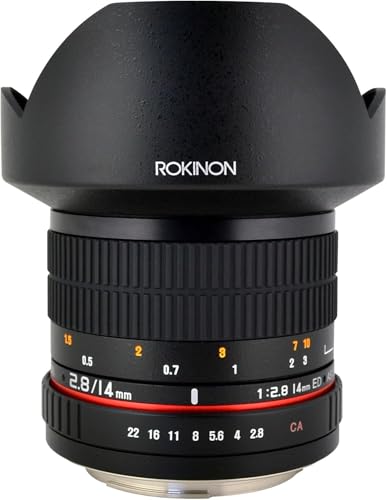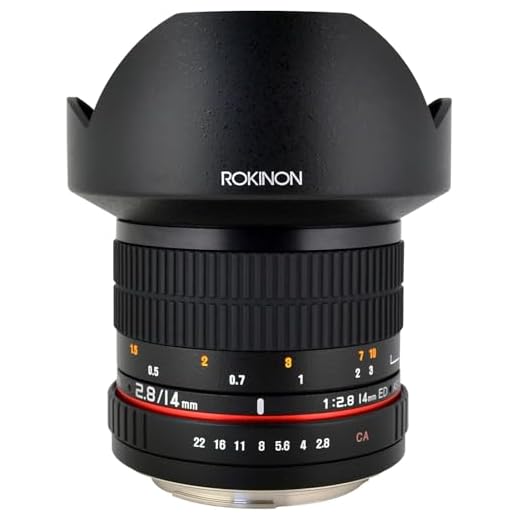




Jupiter, the largest planet in our solar system, has always been a fascinating subject for astronomers and amateur stargazers alike. With its distinctive bands of clouds and iconic Great Red Spot, capturing Jupiter in all its glory has been a dream for many photographers.
But can you shoot Jupiter with a DSLR camera? The short answer is yes, you can! While Jupiter may appear as a tiny dot in the night sky, with the right equipment and techniques, you can capture stunning images of this gas giant.
Whether you’re a beginner or an experienced astrophotographer, shooting Jupiter with a DSLR camera requires patience, practice, and the right settings. In this article, we’ll explore the best ways to photograph Jupiter, from choosing the right camera and lens to setting up your equipment for the best results.
Can You Capture Jupiter?
Yes, you can capture Jupiter with a DSLR camera. Jupiter is one of the brightest objects in the night sky, making it a great target for astrophotography. To capture Jupiter, you will need a DSLR camera with a telephoto lens or a telescope with a camera adapter. Make sure to use a tripod to stabilize your camera and adjust the exposure settings to capture the planet’s details. With the right equipment and settings, you can capture stunning images of Jupiter and its moons.
Using a DSLR Camera?
If you are considering shooting Jupiter with a DSLR camera, there are a few important factors to keep in mind. Firstly, make sure you have the right equipment, including a DSLR camera with manual settings and a telephoto lens with a long focal length. Jupiter is quite far away, so you will need a powerful lens to capture detailed images.
Additionally, it’s important to set your camera to manual mode to have full control over the exposure settings. You may also want to use a tripod to ensure steady shots, especially when shooting at high magnifications. Experiment with different shutter speeds and ISO settings to find the optimal combination for capturing Jupiter’s features.
Best Cameras for Astrophotography
When it comes to capturing stunning images of Jupiter or other celestial bodies, having the right camera can make all the difference. Here are some of the best cameras for astrophotography:
1. Canon EOS 5D Mark IV: Known for its high-quality images and excellent low-light performance, the Canon EOS 5D Mark IV is a popular choice among astrophotographers.
2. Nikon D850: With its high resolution sensor and impressive dynamic range, the Nikon D850 is a great option for capturing detailed images of Jupiter and other planets.
3. Sony Alpha A7R IV: The Sony Alpha A7R IV offers exceptional image quality and advanced features that are perfect for astrophotography enthusiasts.
4. Fujifilm X-T4: The Fujifilm X-T4 is a versatile mirrorless camera that delivers stunning images and is well-suited for capturing the beauty of the night sky.
Whether you’re a beginner or a seasoned astrophotographer, investing in a high-quality camera can help you capture breathtaking images of Jupiter and other celestial wonders.
Jupiter Photography
If you are interested in capturing stunning images of Jupiter with a DSLR camera, you’re in luck! Jupiter is one of the brightest objects in the night sky and can be a fantastic subject for astrophotography. To photograph Jupiter, you will need a DSLR camera with manual settings, a sturdy tripod, and a telescope with a tracking mount.
When photographing Jupiter, it’s important to use a high-quality telescope to magnify the planet and reveal its intricate details, such as its cloud bands and Great Red Spot. Set your camera to manual mode, adjust the focus, and experiment with different exposure settings to capture the best image possible.
Additionally, consider using a planetary camera or a webcam for capturing Jupiter’s details more effectively. Image stacking techniques can help enhance the final image quality by reducing noise and improving sharpness. With practice and patience, you can achieve breathtaking photos of Jupiter with your DSLR camera.
Tips for Shooting Jupiter with a DSLR Camera
1. Use a tripod: To capture clear images of Jupiter, it is essential to stabilize your camera on a tripod to prevent any blurring caused by camera shake.
2. Increase ISO: Jupiter is a bright object, so you may need to increase the ISO setting on your camera to capture it properly. Experiment with different ISO levels to find the right balance.
3. Use a remote shutter release: To avoid any camera shake when taking the shot, use a remote shutter release or the camera’s self-timer function to trigger the shutter.
4. Manual focus: Set your camera to manual focus mode and adjust the focus manually to ensure Jupiter appears sharp and clear in your images.
5. Experiment with exposure settings: Depending on the lighting conditions, you may need to adjust the exposure settings on your camera to get the best results. Try different combinations of shutter speed, aperture, and ISO to find the ideal exposure for capturing Jupiter.
Jupiter with DSLR
If you’re interested in capturing stunning images of Jupiter, using a DSLR camera can be a great option. While Jupiter may appear as a bright dot in the night sky, with the right equipment and techniques, you can capture its distinct features and even its moons.
When photographing Jupiter with a DSLR, it’s important to use a telescope or a telephoto lens to magnify the planet and reveal its details. Additionally, a sturdy tripod is essential to keep your camera steady and prevent motion blur.
Adjusting your camera settings, such as exposure time and ISO, will also help you capture Jupiter’s details and minimize noise in your images. Experimenting with different settings and techniques will allow you to find the best approach for capturing Jupiter with your DSLR.
Overall, with patience, practice, and the right equipment, you can successfully photograph Jupiter with a DSLR camera and create stunning images of this gas giant in our solar system.
Recommended Settings for Shooting Jupiter with a DSLR Camera
When capturing Jupiter with a DSLR camera, it is important to use the right settings to ensure a clear and detailed image. Here are some recommended settings to help you get the best results:
- Use a tripod to keep your camera steady and minimize shake.
- Set your camera to manual mode to have full control over the settings.
- Use a high ISO (around 800-1600) to capture the dim light of Jupiter.
- Set your aperture to a low f-stop (around f/2.8 to f/4) to let in as much light as possible.
- Use a fast shutter speed (around 1/100 to 1/200) to avoid motion blur.
- Consider using a remote shutter release or the camera’s self-timer to minimize camera shake.
- Focus manually on Jupiter using live view mode or by using the camera’s magnification feature.
- Consider shooting in RAW format to retain more detail and flexibility in post-processing.
Jupiter Photography
Photographing Jupiter with a DSLR camera can be a rewarding experience for amateur astronomers and astrophotography enthusiasts. Jupiter, the largest planet in our solar system, offers stunning details and features that can be captured with the right equipment and techniques.
Equipment
To photograph Jupiter, you will need a DSLR camera with manual settings, a telescope with a focal length of at least 1000mm, and a sturdy tripod. You may also need a T-ring adapter to connect your camera to the telescope.
Techniques
When photographing Jupiter, it is important to use a high shutter speed to avoid blurring caused by the planet’s rapid rotation. You can also use a remote shutter release or a timer to minimize camera shake. Additionally, adjusting the ISO and aperture settings can help enhance the details of Jupiter’s atmosphere and cloud bands.
| Equipment | Techniques |
|---|---|
| DSLR camera | High shutter speed |
| Telescope | Remote shutter release |
| Sturdy tripod | ISO and aperture adjustments |
Choosing the Right DSLR Camera for Shooting Jupiter
When it comes to capturing images of Jupiter with a DSLR camera, choosing the right camera is crucial. Here are some key factors to consider:
Sensor Size: A camera with a larger sensor size will generally perform better in low light conditions and capture more detail in distant objects like Jupiter.
Resolution: Higher resolution cameras will allow you to capture more detail in your images of Jupiter, especially when zooming in or cropping the image.
ISO Range: Look for a camera with a wide ISO range to ensure you can capture Jupiter’s details in different lighting conditions.
Lens Compatibility: Consider the availability of lenses compatible with the camera for capturing Jupiter with different focal lengths.
Manual Controls: Ensure the camera has manual controls for adjusting settings like aperture, shutter speed, and ISO to fine-tune your Jupiter shots.
Image Stabilization: Optical or in-body image stabilization can help reduce camera shake when shooting Jupiter, especially at high zoom levels.
By considering these factors, you can choose the right DSLR camera for shooting Jupiter and capture stunning images of the gas giant.
Lens for Jupiter
Choosing the right lens for capturing Jupiter with a DSLR camera is crucial to getting clear and detailed images of the planet. Ideally, you would want a telephoto lens with a long focal length, such as a 200mm or higher, to zoom in on Jupiter and capture its features. A lens with a wide aperture, like f/2.8 or lower, will help gather more light and produce sharp images of the planet. Additionally, using a teleconverter can further extend the focal length of your lens, allowing you to get even closer shots of Jupiter.
FAQ
Can I take a picture of Jupiter with a DSLR camera?
Yes, you can capture Jupiter with a DSLR camera, but it may not appear as detailed as images taken with specialized astrophotography equipment. You will need a high-quality telescope and a camera with manual settings to capture Jupiter and its moons.
What settings should I use on my DSLR camera to shoot Jupiter?
When photographing Jupiter with a DSLR camera, use manual mode with a long exposure time, low ISO, and a high aperture setting to capture the planet and its details. You may also need to use a remote shutter release to minimize camera shake.
Is it possible to see Jupiter’s moons with a DSLR camera?
Yes, you can capture Jupiter’s moons with a DSLR camera and a telescope. By using a high magnification and long exposure settings, you can photograph Jupiter and its moons in the same frame, showcasing the planet and its natural satellites.








